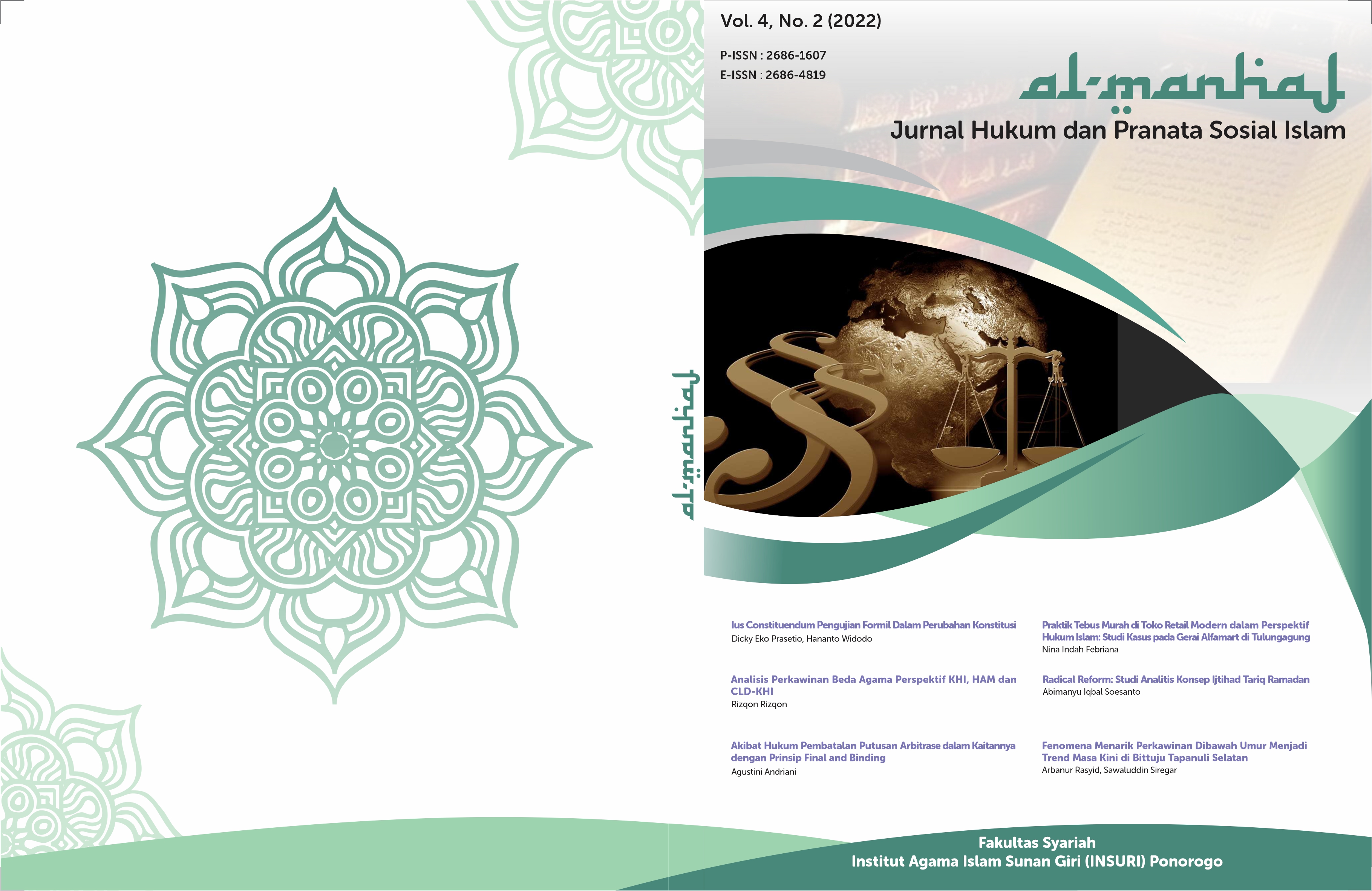Tindak Pidana Pencucian Uang Terhadap Perjudian Online
DOI:
https://doi.org/10.37680/almanhaj.v4i2.1863Keywords:
Money laundering; Online gambling; CrimeAbstract
Law Number 8 of 2010 regulates the Prevention and Eradication of the Crime of Money Laundering. This law contains any provisions that can be a predicate crime in money laundering, one of which is a crime of online gambling. The legal rules that contain criminal sanctions in Law no. 8 of 2010 contained in articles 3 to 5 with a reverse proof system article 2 paragraph (1) where the defendant is obliged to prove the truth of all his assets. This study uses a normative method, using a legal approach (Statute Approach), a conceptual approach (Conceptual Approach) and data analysis (data analysis). The data collection method in this research is library research on legal materials, both primary legal materials, secondary legal materials, as well as tertiary legal materials and/or non-legal materials. The search for legal materials is done by reading, viewing or listening. or via the internet.
References
Darwin Philip , Money Laundeing cara memahami dengan tepat dan benar soal pencucian uang, sinar ilmu, 2012, hal 17
Dwidja Priyatno Dwi , Kebijakan Legislatif tentang sistem Pertanggungjawaban Korporasi di Indonesia, Utomo, Bandung, 2004, hlm. 44.
Eduardo Simorangkir, RI Siap Gabung Anggota Lembaga Pencucian Uang Internasional, diakses melalui http://m.detik.com/finance/berita-ekonomi-bisnis/ri-siap- bergabung- anggota-lembaga-anti-pencucian-uang-internasional , minggu 7 Agustus 2022.
Hamzah Andi, Hukum Acara Pidana Indonesia, Jakarta: Sinar Grafika,2008, hal. 255.
Hanafi,”Reformasi Sistem Pertanggungjawaban Pidana”, Jurnal Hukum, Vol. 6 No.
11 Tahun 1999, hlm. 27
Jahja Juni Sjafrien , Melawan Money Laundering,Visi Media, Jakarta, 2012, hal 13
Koespramono Irsan, Peranan Hukum Nasional dalam Memberantas Money Laundering, Makalah Seminar tentang Money Laundering, BPHN, Jakarta, 4 maret 1997, hlm 15.
Komite TPPU, Strategi Nasional Pencegahan danPemberantasan Tindak Pidana Pencucian Uang, (PPATK: Jakarta, 2007).
Marzuki Peter Mahmud , Penelitian Hukum, Kencana, 2005,hlm 35
Murti Harry , Jurnal Ilmiah Beban Pembuktian Terbalik Tindak Pidana Korupsi dalam Perspektif Jurisdis Sosiologis, 2011.
Nasution Bismar , Rezim Anti Money Laundering, Book’s Terrance &Library, Bandung, 2005, hlm 1
Yunus Husein, Seminar Pemberantasan Korupsi dan Money Laundering: Tantangan Prospek dan Dampak terhadap Perekonomian, Universitas Gadjah Mada, Januari 2009
Sjahdeini Sutan Remy , Seluk Beluk Tindak Pidana Pencucian Uang dan PembiayaanTerorisme, Pustaka Grafika, Jakarta, 2004 , hlm 187
Soekanto Soerjo , Pengantar Penelitian Hukum, UI Press, Jakarta, 1983, hlm.51
Sunarmi, Jurnal Tinjauan Yuridis Pembuktian Terbalik dalam Tindak Pidana encucian Uang, 2011.
The Indonesian Netherlands National Legal Reform Program (NLRP), Ikhtisar Ketentuan Pencegahan Tindak Pidana Pencucian Uang, Gramedia, Jakarta, 2011, hlm. 7.
Tunggal Amin Wijaya , Memahami Seluk Beluk Pencucian Uang, Harvarindo, Jakarta, 2015, hal iv
www. BNN.go.id, BNN Perkuat Penyidik TPPU pada 12 Agustus 2022
Downloads
Published
How to Cite
Issue
Section
License
Copyright:
- Author retains the copyright and grants the journal the right of first publication of the work simultaneously licensed under a Creative Commons Attribution 4.0 International License that allows others to share the work with an acknowledgment of the work's authorship and initial publication in this journal.
- Author is able to enter into separate, additional contractual arrangements for the non-exclusive distribution of the journal's published version of the work (e.g., post it to an institutional repository or publish it in a book) with the acknowledgment of its initial publication in this journal.
- Author is permitted and encouraged to post his/her work online (e.g., in institutional repositories or on their website) prior to and during the submission process, as it can lead to productive exchanges, as well as earlier and greater citation of the published work (See The Effect of Open Access).
License:
-
Attribution — You must give appropriate credit, provide a link to the license, and indicate if changes were made. You may do so in any reasonable manner, but not in any way that suggests the licensor endorses you or your use.
-
No additional restrictions — You may not apply legal terms or technological measures that legally restrict others from doing anything the license permits.
You are free to:
- Share — copy and redistribute the material in any medium or format
- Adapt — remix, transform, and build upon the material for any purpose, even commercially.

This work is licensed under a Creative Commons Attribution 4.0 International License.














